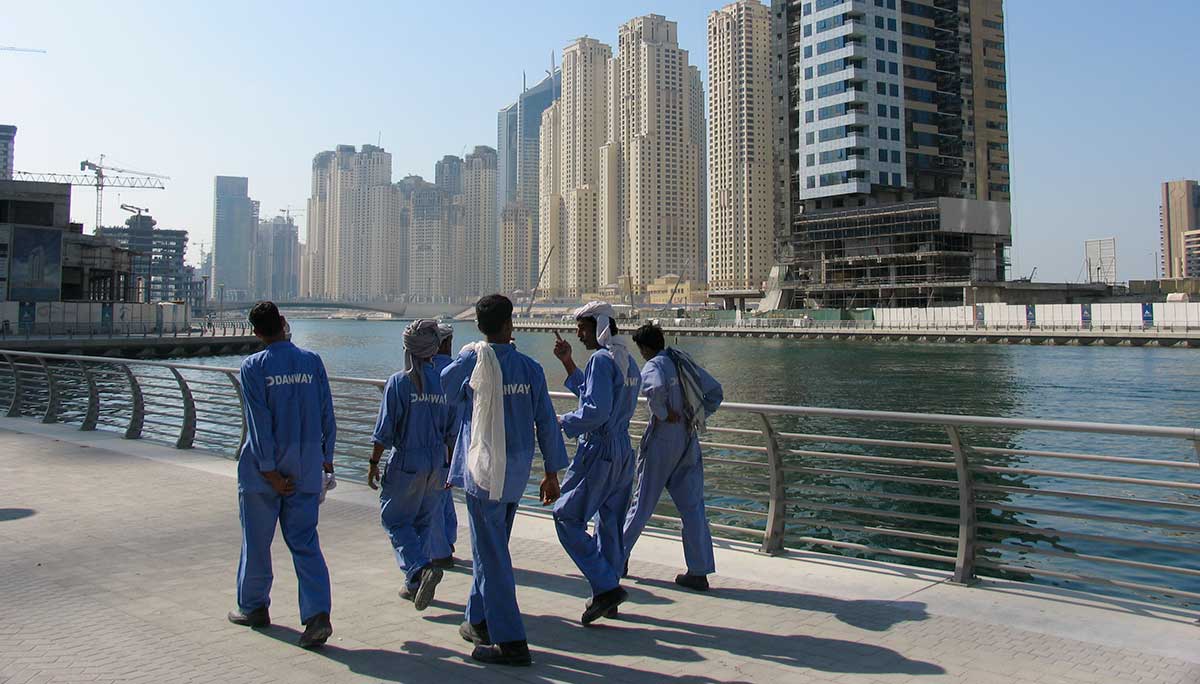Immigration
Bihar Emerging as Top State Sending Workers to Gulf

Indians i
UAE has overtaken Saudi Arabia as leading destination for Indian workers moving to the Gulf, emigration clearance data for first half of 2017 shows.
Emigration from India to the Gulf countries may continue to decline this year as well, statistics from the Ministry of External Affairs indicate. A total of only 1.84 lakh emigration clearances have been obtained by people seeking to move to the GCC countries during the first half of 2017, according to the emigration clearance data released by the government of India for the first six months of the year.
The total number of emigration clearances given during 2016 was 5.07 lakh, registering a decline of 33 per cent as compared to the previous calendar year. Figures from January to June this year show that the trend marking a decline in numbers of Indians migrating to the Gulf will continue this year too.
The emigration clearance data for the first half of 2017 also reveals that the United Arab Emirates has overtaken Saudi Arabia as the preferred destination for Indian workers moving to the Gulf.
A total of 74,778 Indians were cleared for emigration to the UAE during the first six months of this calendar year, making 40.6 per cent of the total emigration clearance figures of about 1.84 lakh. Saudi Arabia, which was usually the leading destination, came at the second spot, with 32,995 (18%) emigration clearances, followed by Oman with 30,413 migrants (16.5%) that replaced Kuwait as the third most popular country for Indians in the Gulf.
The UAE has emerged as the leading country mostly because of the big drop in the number of people moving to Saudi from Uttar Pradesh this year, the Times of India reported. A total 3.06 lakh people had migrated to Saudi Arabia in 2015, of which 1.28 lakh (or 42%) people belonged to UP. In 2016, the corresponding figures were 1.65 lakh, of which 36 per cent migrants hailed from the state. This year, however, only 1,179 workers from UP got emigration clearance for Saudi Arabia from June to January, making only 3.57 per cent of the total people shifting to the country.
In the January-June period this year, Bihar emerged as the state to have sent the maximum number of migrants to the Gulf countries. The state overtook Uttar Pradesh, sending 35,807 (19.5%) migrants to the Gulf, as compared to the 33,043 people (or 18%) leaving UP. In 2015, out of the total 7.58 lakh Indian migrants to the Gulf, 31 per cent belonged to UP while only 14 per cent were from Bihar.
Figures show that Kerala is no longer the state sending the most number of workers to GCC countries.
“Historically, Kerala was the leading source state for migrants going to the Gulf countries,” S Irudaya Rajan, professor at the Centre for Development Studies (CDS), which undertakes the annual Kerala Migration Survey, told TOI. ”One out of every five migrants who left India in 2008 was a Keralite. After the global crisis that followed, this is down to one out of twenty in 2016.”
Kerala was at the eighth spot in 2016 and 2015, with 24,962 and 42,731 migrants, respectively, coming from the state, making for 4.9% and 5.6%, respectively, of the total figures from the country.
In the first half of this year, Kerala’s ranking has moved up to the seventh place, with 8,995 emigration clearances making up about 5 per cent of the emigration clearances across India.
Rajan attributes the causes to factors such as the narrowing of wage differential for unskilled labourers between Kerala and Gulf, reduction in savings for Gulf workers due to the rising cost of living, and the increasing ageing population in the state.
The publication also cited a study done by the International Labour Organisation (ILO) in 2016 as stating that the referral wage fixed by India for carpenters and masons, which is Saudi Riyal 1,700 per month, is 40 per cent and 10 per cent higher than that decided by Nepal and Philippines, respectively. It quoted the report as saying: “The higher referral wages may periodically reduce employers’ preference for Indian workers. But if this tendency continues for long, it may adversely impact migration outflows from India, which in turn will restrict livelihood options and dampen remittance inflows.”



